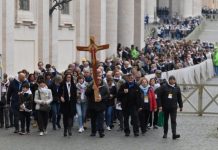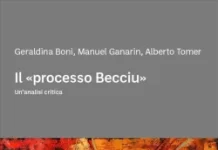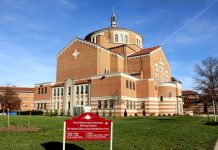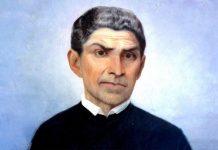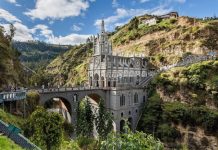Due to the invasions of Vikings, Hungarians, Mohammedans, as well as fratricidal wars among its inhabitants, Europe had been largely held back in science, education, art, agriculture etc.
Newsdesk (16/10/2022 2:00 PM, Gaudium Press) Cluny and other religious Orders admirably encouraged progress in all sectors of society, giving glory to God and benefiting the whole.
Cathedrals, churches and monasteries maintained schools where classes were given for the education of children and adolescents of noble families and of the common people. Education was free for those who could not afford it.
Schools for children of nobles and commoners
There were two levels: the trivio and the quadrivio. The first lasted three years and included Grammar, Rhetoric and Logic; the second lasted four years and included Arithmetic, Geometry, Music and Astronomy. These seven subjects were called “liberal arts”.
Montalembert (1810-1870) states: “From the fall of the Roman Empire until the 13th century, it was thanks to the monks that science, study and education could be sheltered from the ravages of barbarism, and receive all the developments that suited a Catholic and military society.” [1]
In the musical sphere, Guido d’Arezzo (992-1033), an Italian friar who developed the system of musical notation, stood out.
The monks also developed artisan trades such as weaving, shoe-making, carpentry, saddlery, forging and lime-kiln making. And to meet the needs of worship in churches, goldsmithery, sculpture, stained-glass making and tapestry. And the convents specialized in the making of lace, vestments, etc.
Liturgy
Monasteries had libraries that were enriched by copyists, who transcribed classical works, giving particular importance to the Bible. The beginning of chapters were adorned with beautiful illumination and, especially on the covers of the Holy Scriptures, precious stones were inlaid.
Beautiful mosaics, images and paintings adorned the churches; altarpieces were made of gold, silver or decorated with jewels. The monks perfected the Liturgy, which has a fundamental role in the religious formation of the faithful.
Monsignor João Scognamiglio Clá Dias writes: “Cluny was a fount of living water from which wonders sprang. There the splendour of the Liturgy reached a zenith of sacredness and unction that would endure for centuries.” [2]
Tendency to the most perfect
Dr. Plinio Corrêa de Oliveira explains: “The humblest men of the people continually manifested a tendency towards the most perfect, most holy and most beautiful. A kind of temperate insatiability, a healthy and continuous pressure of the soul for the best, under all standpoints, never content with what it has, but seeking something superior; it was, therefore, a tendency towards elevation.
“Because of this continuous search for the most beautiful, there existed the idea that above the visible beings there were invisible beings, more noble and more beautiful than the visible ones. And at the top of the pyramid of these spiritual beings was God, the Supreme Perfection. So, two ascending movements: one to improve earthly things, in search of their perfection, and the other, through earthly things, to walk towards God. […]
“Marvelment, wonder, admiration is the posture of soul necessary to every man; it is the starting point of pilgrimage in all manner of his studies or elucidations, whether in the artistic, scientific or cultural field.”[3]
The clerics and religious of those days sought the marvelous, while the “ecclesiastical ‘miserabilists’ of our day, want to empty the sanctuaries of all works of art and reduce the church to a place from which the arts have fled in terror.”[4]
At that time, the West was covered with forests, wastelands, marshes. The monks tended the lands belonging to the monastery in which they lived. As they desired perfection in all things, they worked out and perfected the ways of doing agricultural work.
They devoted themselves, for example, to improving wines.
In 2020, the book The Winegrowers of Heaven, written by Marc Paitier, General of the army of that country, was launched in France. The work, among other themes, describes the history of monastic viticulture and the primordial role of religious in the building of Christian Civilization.
Civil life organized on the basis of God’s law
They helped to improve roads and protect travellers.
“Medieval people travelled a lot. Just to analyse the pilgrimages that were made then, consider the following: From all over Europe, pilgrims would flock to Santiago de Compostela [in Spain] to the point where, at certain times of the year, some stretches became veritable streets because of the intensity of the traffic.”[5]
“As there were few hostels outside the cities […], the bishops, near their churches, the monks, near their monasteries, set up hostels where all those who sought them were admitted.“[6] The poorest were exempted from payment.
“This religious flourishing projected itself on civil society. The prince, the artisan, the philosopher, the warrior, the minstrel was not a Christian only within the temple, at the moment of prayer. He reigned, produced, thought, warred and sang as a Christian. His kingdom was a Christian kingdom, his work was a Christian work, his thought was a Christian thought, his war was a Christian war, and his song was a Christian song.
“All civil life, organized on the basis of the Law of God, was ordered according to the Will of God, and according to the natural order established by God when he created the universe, the world and man. Thus a temporal society was formed, established under the sign of Christ, according to the Law of Christ, and according to the order and nature proper to each thing created by God.”[7]
A fundamental point should be stressed: Cluny encouraged the Crusades and the Spanish Reconquista.
By Paulo Francisco Martos
[1] MONTALEMBERT, Charles Forbes René, Count of Montalembert. Les moines d’Occident – depuis Saint Benoit jusqu’à Saint Bernard. Paris: Victor Lecoffre. 1882, v. 6, p. 140-141.
[2] CLÁ DIAS, João Scognamiglio, EP. Mary Most Holy! The Paradise of God Revealed to Men. Sao Paulo: Heralds of the Gospel. 2020, v. III, p. 80.
[3] CORRÊA DE OLIVEIRA, Plinio. The civilization of admiration. In Dr. Plinio magazine. São Paulo. Year XV, n.168 (March 2012), p. 33.
[4] Invincibility of those who open themselves to grace. In Dr. Plinio magazine. Year XXII, n. 260 (November 2019), p. 27.
[5] Idem. Saint William: the beauty of harmonious extremes. In Dr. Plinio magazine. São Paulo. Year XIV, n. 159 (June 2011), p. 9-10.
[6] PIGNOT, Jean-Henri. Histoire de l’ordre de Cluny, depuis la fondation de l’abbaye jusqu’à la mort de Pierre-le-Vénérable (909-1157). Paris : Durand, Libraire. 1868, v. 2, p. 464.
[7] CORRÊA DE OLIVEIRA, Plinio. The great experience of ten years of struggle. In newspaper Catolicismo. Campos dos Goytacazes, no. 173, May 1965.








